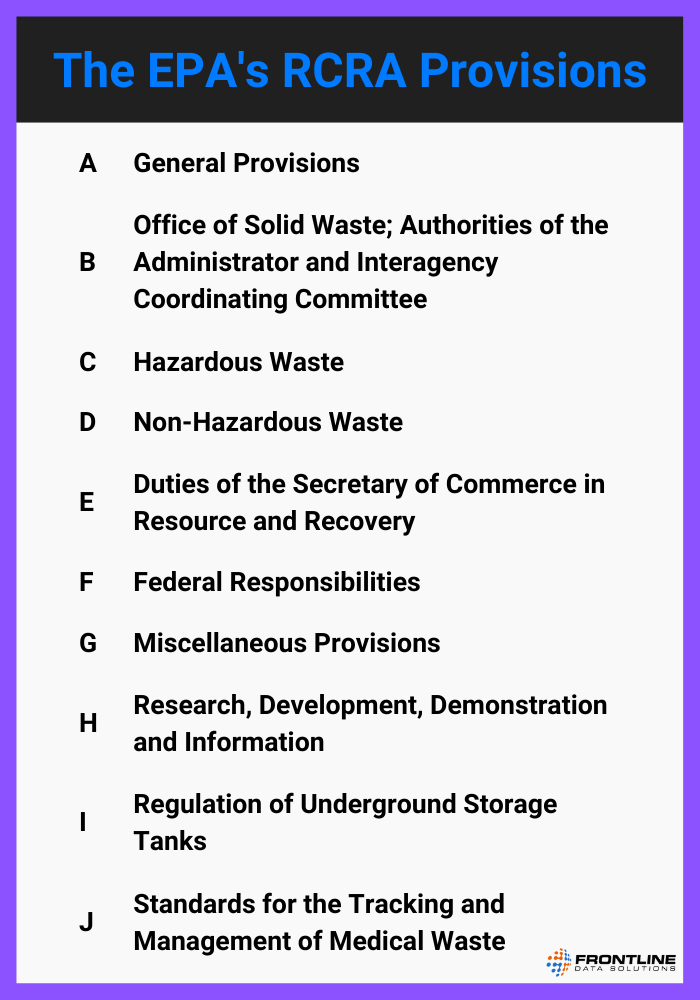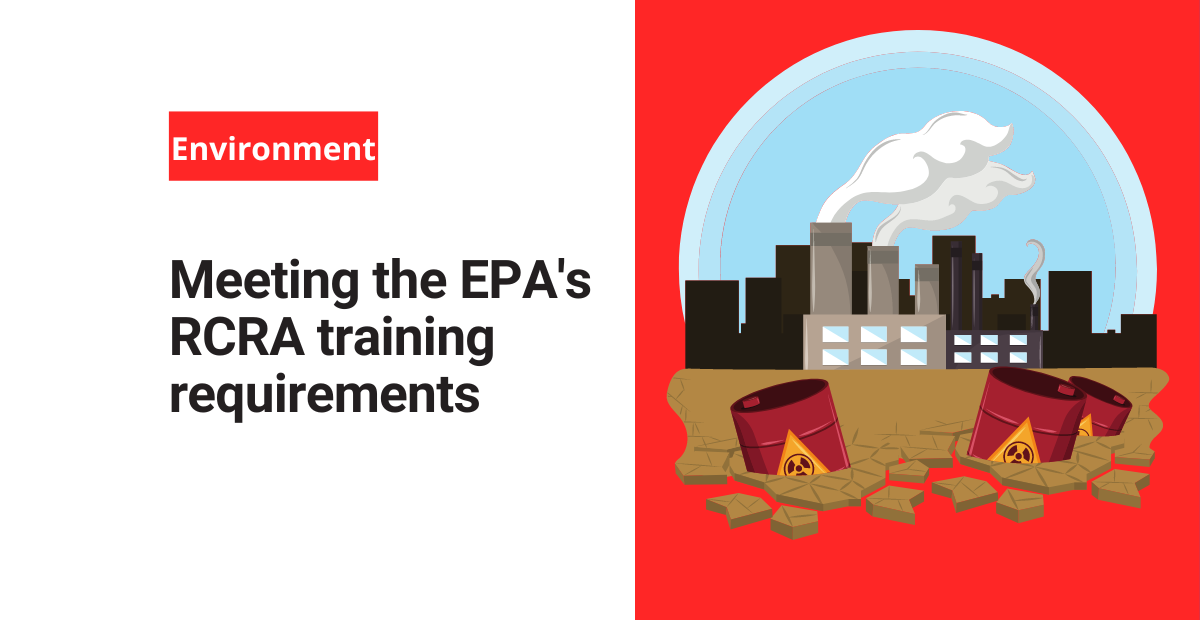In 1976, the US government passed the Resource Conservation and Recovery Act (RCRA). In short, the RCRA set federal goals for municipal waste disposal, energy and resource conservation, and sustainable waste management practices.
To this day, the Environmental Protection Agency (EPA) continues to enforce RCRA waste management requirements. A major part of compliance is ensuring that all your workers have the training they need to adhere to RCRA regulations.
What topics does the RCRA cover?
In general, the RCRA addresses solid waste control at all stages of the process. This includes both the handling and disposal of materials. There are 10 total provisions listed within the law: Subtitles A-J.

The two most notable provisions are Subtitles C and D which regulate hazardous and non-hazardous waste, respectively. Within those two sections is where you will find all the specific regulatory information, on topics like:
- Owning and operating waste treatment plants or disposal facilities
- EPA hazardous waste permits
- Universal waste management standards
- Procurement guidelines for products containing recovered materials
- Using solid waste as fuel or combustible material
And these are just some of the examples of what’s covered. There have been many amendments to the RCRA since 1976. Here are some of the most notable changes over the years:
Solid Waste Disposal Amendments – 1980: This change created a new category of special wastes that would no longer fall under Subtitle C regulations. This included cement kiln dust, mining waste, coal combustion residuals, drilling fluid, and other forms of oil and gas byproducts.
Hazardous and Solid Waste Amendments – 1984: This amendment expanded regulations to cover small waste generators (in addition to larger ones), increasing the environmental protections that the RCRA offered.
Land Disposal Program Flexibility Act – 1996: This act widened options for the land disposal of waste products.
In addition to these amendments, there have been other changes aimed at increasing environmental safety while offering businesses more ways to safely dispose of waste. When it comes to RCRA compliance, however, the general requirements stay relatively fixed so businesses can ensure consistent compliance without bending over backwards to accommodate frequent changes.
What are the RCRA training requirements?
Requirements for RCRA training are listed in the Code of Federal Regulations (40 CFR 260). They outline the following conditions:
All personnel must go through RCRA training within six months of their first hire date. Furthermore, they have to complete an 8-hour refresher course once per year.
For reference, here is the CFR’s definition of personnel:
“All persons who work at, or oversee the operations of, a hazardous waste facility, and whose actions or failure to act may result in noncompliance.”
A best practice is to train all your workers, regardless of their role, on proper hazardous waste management. At the very least, your training program should include anyone who works on the facility floor, even if their role is indirectly related to the waste disposal process.
This practice ensures that everyone who may come into contact with hazardous materials understands how to properly handle them. So, even people who don’t regularly deal with these issues at least understand them and know how to prevent incidents and eliminate hazards.
Creating RCRA training materials
The EPA provides hazardous waste training modules on its website, however, most of the materials are outdated in style and format. They’re in PDF format, so they’re not super user-friendly for different platforms and classrooms. But the content in these modules is still very valuable, and you can use it to create your own training materials.
For practical purposes, you’re not going to be able to cover all the content within the RCRA. Instead, focus on these main topics so your employees have all the information they need to ensure compliance:
- Handling hazardous materials
- Disposing of all materials in an environmentally friendly way
- hazardous materials
- Using underground storage tanks
- Recyling
- Working with reclaimed materials
- Documenting storage and disposal of hazardous products
- Operating equipment like furnaces, generators, boilers, transporters, and incinerators
You should also consider incorporating information about the RCRA, its history, and how the EPA regulates it.
Documenting RCRA training
Like any other regulatory agency, the EPA may request information regarding your safety initiatives and policies. In case of an inquiry, you’ll want to have thorough records to demonstrate your completion of the RCRA training requirements.
Using an EHS learning management system (LMS) is the easiest way to do this. It allows you to administer training, track completion, and manage all training materials.
With an automated system for tracking RCRA training, you won’t have to worry about meeting the annual refresher requirement. You can simply create a notification to alert you when a worker is getting close to the deadline. This takes away the administrative burden of EPA compliance and allows you to focus on other areas of waste management process improvement instead.
Other posts you might like…
No posts
